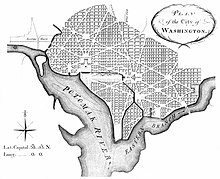Urban Design as an Integrative Profession

Urban designers work with architects, landscape architects, transportation engineers, urban planners, and industrial designers to reshape the city. Cooperation with public agencies, authorities, and the interests of nearby property owners is necessary to manage public spaces. Users often compete over the spaces and negotiate across a variety of spheres. Input is frequently needed from a wide range of stakeholders. This can lead to different levels of participation as defined in Arnstein's Ladder of Citizen Participation.
While there are some professionals who identify themselves specifically as urban designers, a majority have backgrounds in urban planning, architecture, or landscape architecture. Many collegiate programs incorporate urban design theory and design subjects into their curricula. There are an increasing number of university programs offering degrees in urban design at the post-graduate level.
Urban design considers:
- Pedestrian zones
- Incorporation of nature within a city
- Aesthetics
- Urban structure – arrangement and relation of business and people
- Urban typology, density and sustainability - spatial types and morphologies related to intensity of use, consumption of resources and production and maintenance of viable communities
- Accessibility – safe and easy transportation
- Legibility and wayfinding – accessible information about travel and destinations
- Animation – Designing places to stimulate public activity
- Function and fit – places support their varied intended uses
- Complementary mixed uses – Locating activities to allow constructive interaction between them
- Character and meaning – Recognizing differences between places
- Order and incident – Balancing consistency and variety in the urban environment
- Continuity and change – Locating people in time and place, respecting heritage and contemporary culture
- Civil society – people are free to interact as civic equals, important for building social capital
- Participation / engagement – including people in the decision-making process can be done at many different scales.
Relationships With Other Related Disciplinesedit
The original urban design was thought to be separated from architecture and urban planning. Urban design has developed to a certain extent, but it still comes from the foundation of architecture. Most urban designers are primarily trained in architecture. It is often considered as a branch under the architecture, urban planning and landscape architecture and essentially the construction of the urban physical environment. Now urban design is more integrated into the social science-based, cultural, economic, political and other aspects. Not only focus on space and architectural groups, but also look at the whole city from a broader and more holistic perspective to shape a better living environment. Compared to architecture, the spatial and temporal scale of urban design processing is much larger. It deals with neighborhoods, communities, and even the entire city.
Comments
Post a Comment